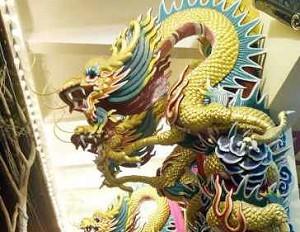About 1,500 years ago in China’s South Dynasty (420-589), there was a renowned painter whose name was Zhang Sengyou. In addition to serving as the court’s royal librarian, Zhang also held the post of a general and a governor.
A legendary painter, Zhang commanded great respect from both the Emperor and commoners. He loved to paint animals, flowers, mountains, and rivers. Outside of his house he painted a vulture on one side and a hawk on another. His paintings were so vividly alive that birds were too scared to build nests around the house.
Once, monks from the Anle Temple in the southern city of Nanjing invited him to paint dragons on the temple wall. People heard this news and came to watch this famous artist paint. In a short time, Zhang painted four lifelike dragons with his magical brush. But people quickly discovered that the dragons did not have eyes. They all wondered why.
Zhang explained, “The dragons’ eyes hold their spirits, without which their bodies are merely physical things. If I paint their eyes, they would fly away.” The on-lookers shook their heads in disbelief.
Zhang breathed out a sigh, and took up his brush. He quickly painted eyes on two of the dragons. Suddenly, the sky darkened, thunder roared, and rain came down hard. The two dragons that had painted eyes broke through the wall and flew swiftly heavenward with a thunderbolt.
Watching all of this, the people turned speechless. The sky quickly brightened up again, and on the temple wall were left two dragons without painted eyes.
Generations have passed and some people still believe the eyed dragons under Zhang Sengyou’s brush did become alive. Regardless, this story has given birth to the expression “paint the dragons’ eyes,” which refers to vivid spirit portrayed skillfully in artistic work.
Source: Based on “A Chronicle of Famous Paintings from Past Dynasties (Lidai Minghua Ji)” compiled by Zhang Yanyuan, a painter who lived in the Tang Dynasty (618-907).





